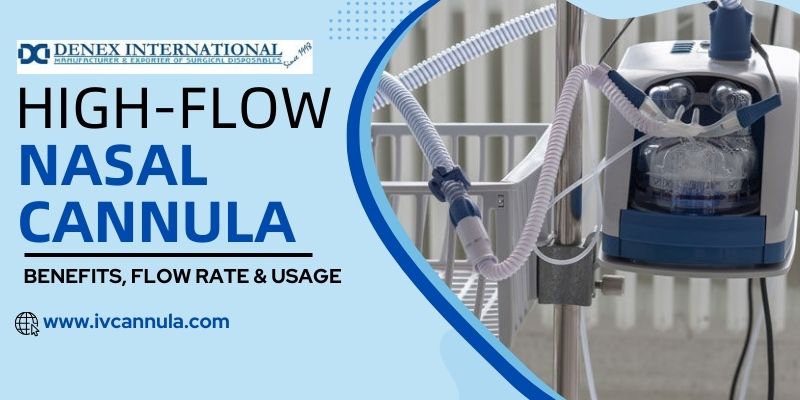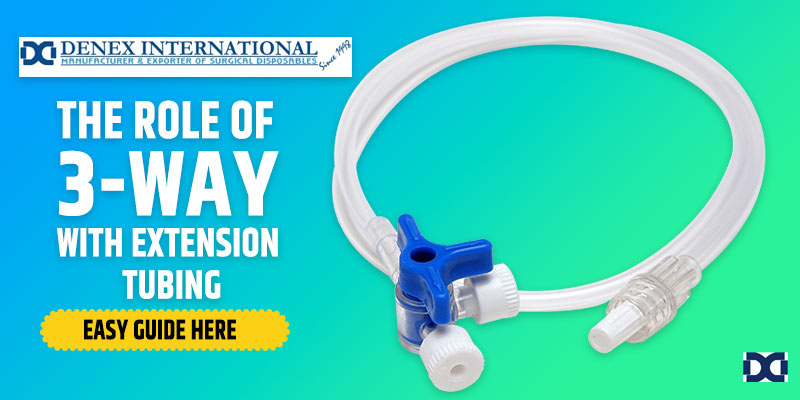Welcome to the intricate world of medical devices! In this blog post, we will delve deep into the Parts of Cannula that constitute a cannula, shedding light on the critical elements that make up this essential medical tool. As a leading IV Cannula Manufacturer in India, Denex International brings you a comprehensive guide to the parts of a cannula, unravelling the complexity and significance of each component.
Cannula Overview:
 A cannula, particularly an intravenous (IV) cannula, is a thin, flexible tube designed for medical applications, primarily used for the administration of fluids, medications, or blood products directly into a patient’s bloodstream. Understanding the individual parts is crucial for both medical professionals and enthusiasts seeking a deeper insight into the functionality of this medical marvel.
A cannula, particularly an intravenous (IV) cannula, is a thin, flexible tube designed for medical applications, primarily used for the administration of fluids, medications, or blood products directly into a patient’s bloodstream. Understanding the individual parts is crucial for both medical professionals and enthusiasts seeking a deeper insight into the functionality of this medical marvel.
Parts of Cannula(IV Cannula)
we unveil the anatomy of this indispensable medical device. As a distinguished IV Cannula Manufacturer in India, Denex International takes pride in providing a deeper understanding of the various parts that constitute a cannula. Let’s delve into the intricacies, focusing on essential components such as the Luer Lock Plug, Flashback Chamber, Needle Grip, Luer Connector, Wings, Valve, Injection Port, Bushing, Catheter, and Needle
Luer Lock Plug:
The Luer Lock Plug is a vital component that ensures a secure connection between the IV cannula and other medical devices or infusion systems. Its threaded design allows for a tight and leak-free seal, preventing any inadvertent disconnections during medical procedures.
Flashback Chamber:
Nestled within the hub, the Flashback Chamber is a transparent reservoir that visually confirms successful vein entry by displaying a flashback of blood. This crucial feature empowers healthcare professionals with real-time feedback during the cannulation process.
Needle Grip:
Providing ergonomic support during insertion, the Needle Grip enhances the precision and control of the healthcare practitioner, ensuring a smooth and accurate placement of the cannula.
Luer Connector:
The Luer Connector acts as the interface for connecting the IV cannula to external devices, facilitating the seamless flow of fluids or medications. Its standardized design ensures compatibility across various medical systems.
Wings:
Extending from the hub, the Wings serve as anchors, providing stability during insertion and securing the cannula in place once successfully placed in the patient’s vein.
Valve:
Positioned within the cannula, the Valve regulates the flow of fluids, preventing backflow and maintaining a controlled administration of medications or fluids.
Injection Port:
The Injection Port offers a dedicated site for administering additional medications or fluids without disturbing the primary IV line, enhancing flexibility in patient care.
Bushing:
The Bushing reinforces the connection between the Catheter and the hub, ensuring structural integrity and preventing leaks.
Catheter:
The Catheter is the flexible tube that remains in the patient’s vein, facilitating the smooth delivery of fluids or medications directly into the bloodstream.
Needle:
The Needle serves as the initial puncturing point, creating an entry for the cannula into the patient’s vein.
Conclusion
As an esteemed IV Cannula Manufacturer in India, Denex International is dedicated to providing high-quality medical devices while fostering knowledge about their intricate components. Understanding the parts of a cannula is essential for healthcare practitioners and enthusiasts alike, ensuring safe and effective patient care. Stay tuned for more insights into the world of medical devices brought to you by Denex International.







